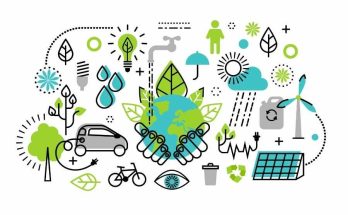By Alejandro Angulo
Today, plastic waste is everywhere, and it appears humankind is not slowing down at creating more. Most disturbingly, it has accumulated in the world’s oceans. A new study from Australia’s National Science Agency (CSIRO), published in the journal Frontiers in Marine Science, has shed some light on the problem of plastics in the sea. The study estimates there are 14 million metric tons of micro-plastics on the ocean floor. Clearly, humanity has not been able to responsibly manage its dependence on single-use plastic, and too much of it is ending up in the oceans of the world. Human health is also harmed by exposure to plastics. It can affect fertility, hormonal, metabolic, and neurological activity, while the open burning of plastics contributes to air pollution. The impact of plastic pollution in our world is a catastrophe in the making.
Against this dire backdrop, representatives from 175 countries recently came together at the United Nations Environment Assembly held in Nairobi, Kenya. Heads of state and environmental ministers joined together to endorse a landmark resolution to end plastic pollution and forge a legally binding international agreement by the end of 2024. This resolution establishes an Intergovernmental Negotiating Committee that will begin working toward the health of our planet’s oceans.
The UN declared this agreement to be the most important multilateral agreement on the environment since the Paris Agreement. Inger Andersen, executive director of the United Nations Environment Program, called it an insurance policy for this and future generations. She declared that the people of the world must learn to live with plastic and not be doomed by it. To support her statements, Andersen had her agency release the following data:
• By 2050, greenhouse gas emissions associated with the production, use, and disposal of plastics will represent 15% of the permitted emissions, according to the goal of limiting global warming to 1.5° C.
• More than 800 marine and coastal species are affected by pollution due to ingestion, entanglement, and other hazards.
• Every year about 11 million tons of plastic waste reaches the oceans. This number could triple between now and 2040.
• The volume of plastics reaching the oceans will increase by more than 80% by 2040.
• The production of virgin plastic increased by 55%.
• Globally, only 9% of plastics are recycled.
Anderson claims that a shift towards an economic model that keeps materials, products, and services in circulation for as long possible could reduce plastic waste, save governments US$70 billion by 2040, and reduce greenhouse gas emissions by 25%. Undoubtedly, this agreement is very relevant in our modern world. However, from my point of view, while it professes to carry the weight of all the signatory countries, its goals will be very difficult to achieve until the use of oil ceases and a practical solution is found to replace plastics.
In spite of all the success at the conference, there were disputes and disagreements. Attendees from industries wanted to focus on waste management, while others successfully argued that solutions would only be found in a more expansive investigation of the entire life cycle of plastics. The more environmentally minded representatives claimed that 40% of all plastic manufactured today goes into packaging, and they insisted on a collective response of the conference, addressing plastic production, packaging design, product distribution, as well as disposal after use. They claimed that attacking the problem from multiple angles would provide more opportunities to mitigate the amount of plastic entering the worldwide system. For instance, simply reducing the amount of plastic used in packaging would be intervention at the source and yield a more effective result.
The threat of environmental systems becoming overwhelmed by plastic waste cannot be overstated. According to internationally accepted figures, between 1950 and 2020, the production of plastic made from fossil fuels rose from approximately two million tons per year, to just over 500 million tons. Based on these numbers, it is projected that production will continue to increase until it reaches one billion tons in 2050. Although this agreement is a big step forward, continued efforts by the industrialized nations of the world will be required to bring it to fruition.




